Throughout history, ancient cities have been abandoned due to climate change, wars, and environmental disasters, with a select few being the direct result of a volcanic eruption.
Cuicuilco
Cuicuilco was a Mesoamerican city, located in the present-day borough of Tlalpan in Mexico City, that was destroyed in a series of eruptions at the Xitle volcano.
The city emerged during a period when Mesoamerican villages from the mid-Preclassic (800 BC) were merging into the large population centres of the late Preclassic (AD 100).
Cuicuilco became an important regional urban and ceremonial centre, inhabited by an estimated population of around 20,000 people.
A series of eruptions at the Xitle volcano during the end of the pre-Classic period released basaltic lava flows that engulfed much of the city in volcanic rock, leading to the dispersion of Cuicuilca’s people towards Toluca and Teōtīhuacān.
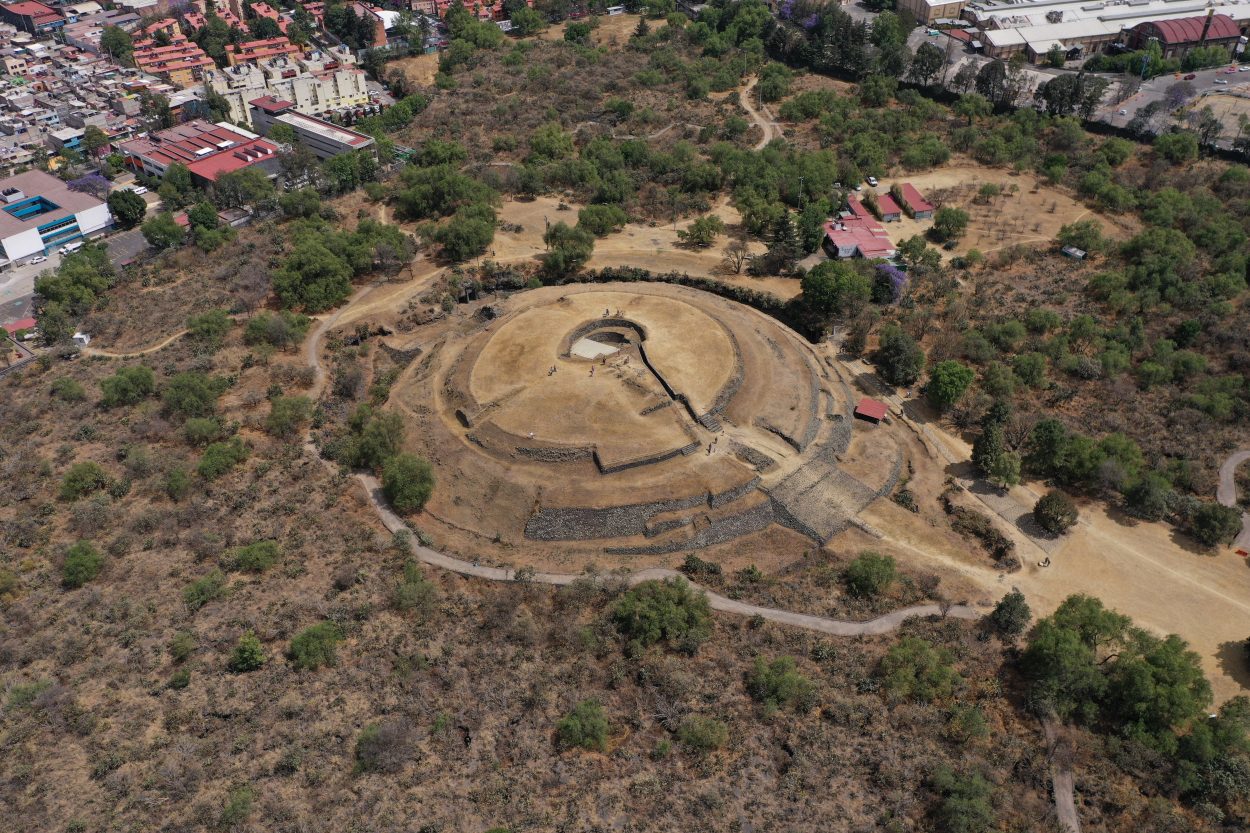
Copilco
Copilco was a Mesoamerican city, located beneath the present-day municipality of Coyoacán in Mexico City, that was also destroyed in a series of eruptions of the Xitle volcano.
Copilco was one of the first and most important ceremonial centres in the Valley of Mexico, that developed from several small villages, becoming a major urban centre around 100 BC.
With the eruption of the Xitle volcano during the end of the pre-Classic period, the city was buried in lava, leading to the dispersion of Copilco’s people towards Toluca and Teōtīhuacān.
Akrotiri
Akrotiri was a Cycladic Bronze Age city, located on the Greek island of Santorini (Thera) near the present-day village of Akrotiri (for which the prehistoric site is named).
Akrotiri began as a small settlement, that relied on agriculture and animal husbandry, which developed into a prosperous trading hub with Minoan influences. The strategic position on the trade routes between Cyprus and Crete, led to the city building a merchant fleet for exporting copper, saffron, wine, and other local products, which gave rise to an affluent way of life for the inhabitants.
During the 16th century BC, the Theran volcano, also called the Minoan eruption deposited layers of pumice and ash, burying Akrotiri up to 7 metres in material. This was followed by pyroclastic surges, lava flows, lahar floods, and co-ignimbrite ash-fall deposits, leaving the island uninhabited for centuries.
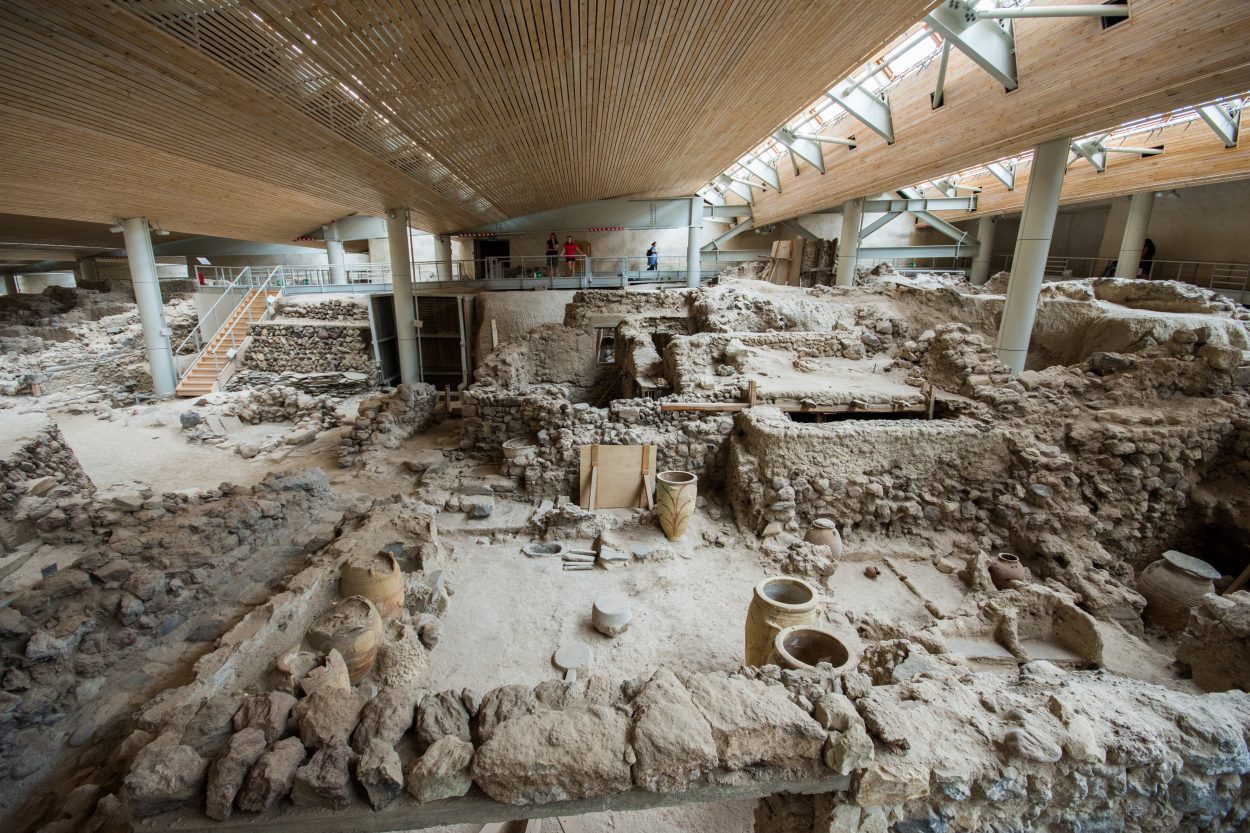
Pompeii
Pompeii was a Roman city near present-day Naples, in the Campania region of Italy, that was destroyed in the eruption of Mount Vesuvius in AD 79.
Initially founded by Oscan settlers in the 8th century BC, Pompeii became a Roman colony with the name of Colonia Cornelia Veneria Pompeianorum after the Social Wars in 89 BC
At its peak, Pompeii had a population of around 20,000 inhabitants, and became an important passage for goods that arrived by sea, to be sent toward Rome or southern Italy along the nearby Appian Way.
In AD 79, the city was buried in pumice rain (lapilli) following the eruption of Mount Vesuvius. This was followed by a pyroclastic flow consisting of high speed, dense, and very hot ash clouds, that incinerated or suffocated the population that had remained after the initial eruptions.
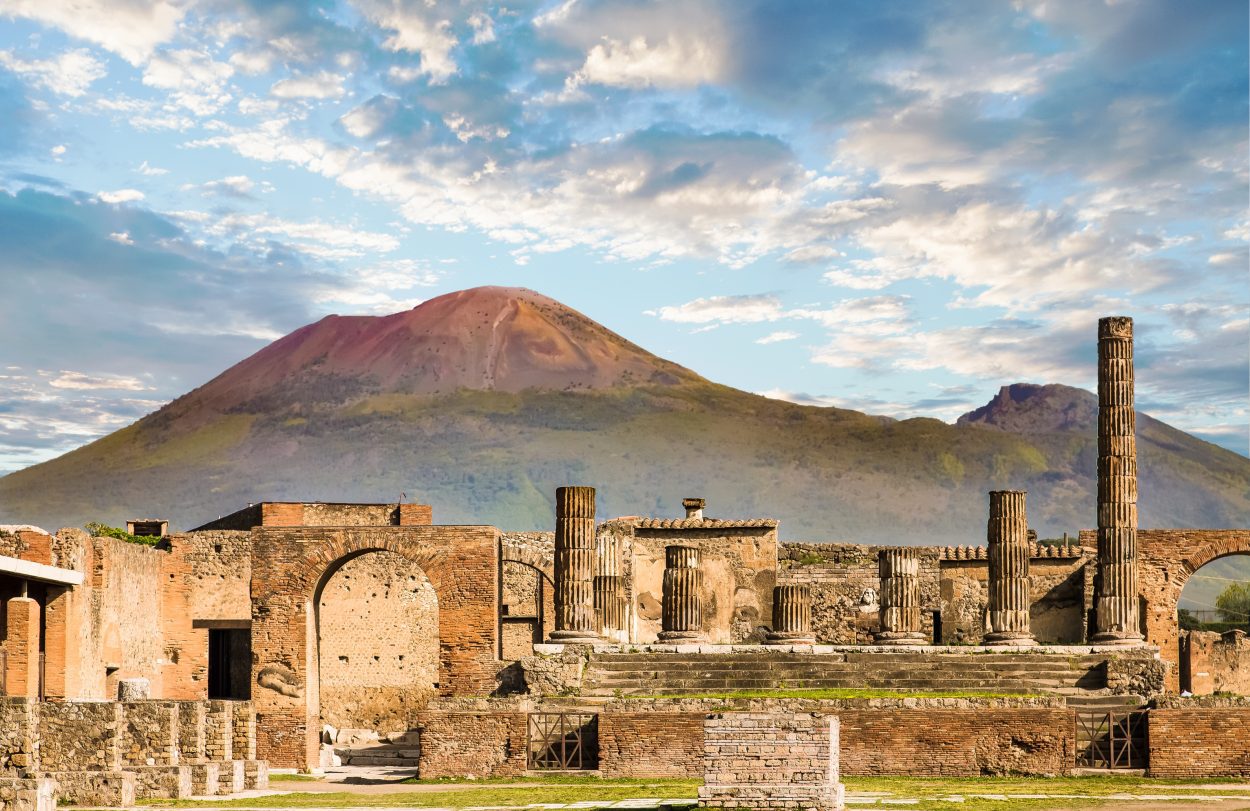
Herculaneum
Herculaneum was a Roman city in the present-day comune of Ercolano, in the Campania region of Italy, that was also destroyed in the eruption of Mount Vesuvius in AD 79.
The city was founded by Oscan settlers, and became a Roman municipium after participating in the Social Wars in 89 BC.
Herculaneum was a popular sea-side retreat for the Roman elite, reaching a population of around 5,000 inhabitants.
With the eruption of Mount Vesuvius in AD 79, the initial prevailing winds blew to the southeast, causing volcanic material to fall on the city of Pompeii and the surrounding countryside, but leaving Herculaneum relatively unscathed during the first phase. The following day, pyroclastic surges struck Herculaneum, burying the town in thick pyroclastic material.
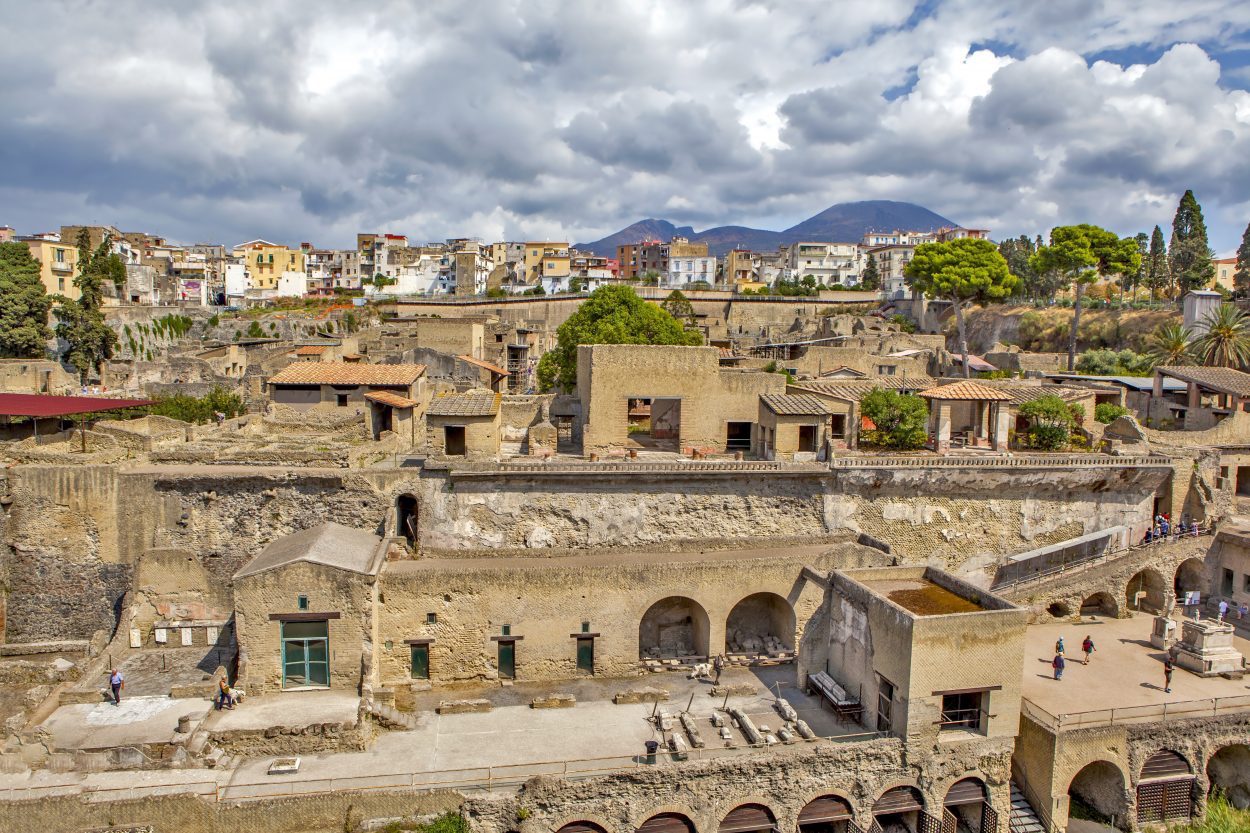
Stabiae
Stabiae was a Roman city and seaside resort, in the present-day comune of Castellammare di Stabia, in the Campania region of Italy, that was also destroyed in the eruption of Mount Vesuvius in AD 79.
During the 6th century BC, an Oscan port town had emerged, comprising of mainly Samnites, but this saw an economic slowdown in favour of the development of nearby Pompeii. Under Roman rule, the city became a popular resort for Roman elite, who constructed large high status villa complexes.
The city was largely buried by tephra ash in the AD 79 eruption of Mount Vesuvius up to a depth of five metres, followed by a large pyroclastic surge. Unlike Pompeii and Herculaneum, Stabiae was repopulated 40 years after its destruction.
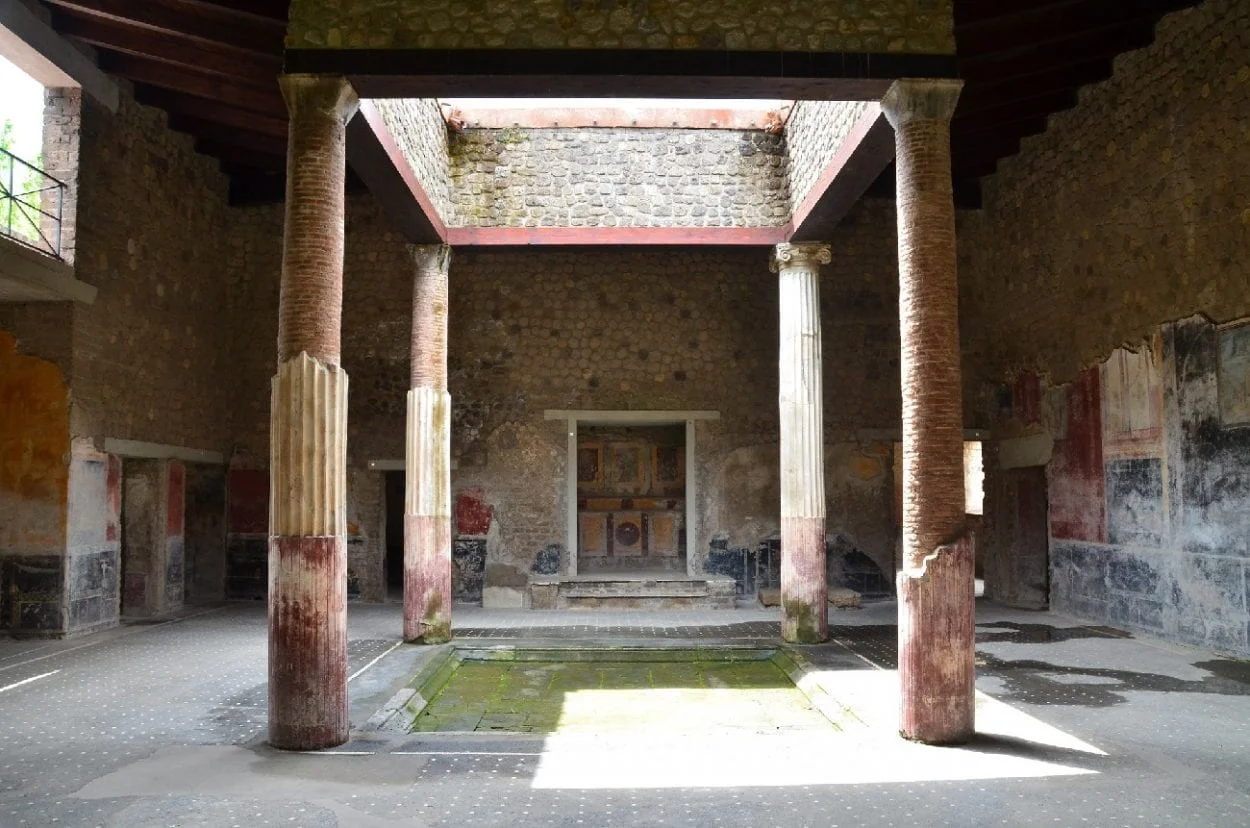
Header Image Credit : Darryl Brooks – Shutterstock





